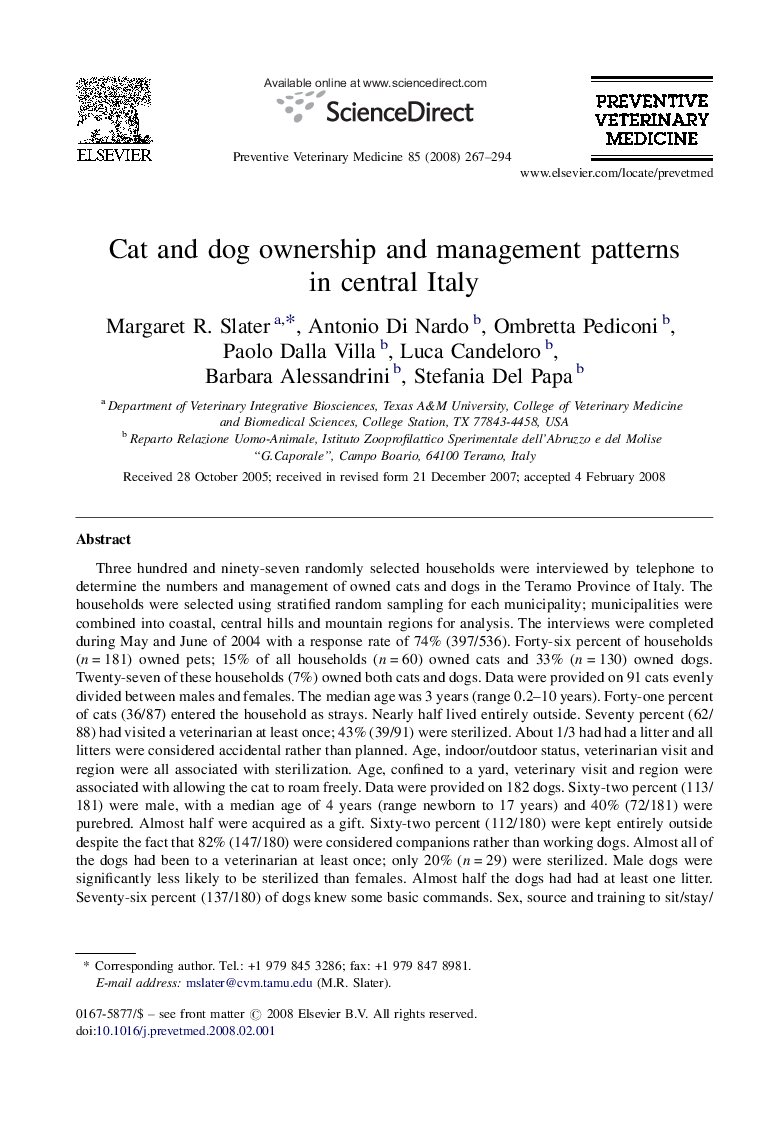| Article ID | Journal | Published Year | Pages | File Type |
|---|---|---|---|---|
| 2453486 | Preventive Veterinary Medicine | 2008 | 28 Pages |
Three hundred and ninety-seven randomly selected households were interviewed by telephone to determine the numbers and management of owned cats and dogs in the Teramo Province of Italy. The households were selected using stratified random sampling for each municipality; municipalities were combined into coastal, central hills and mountain regions for analysis. The interviews were completed during May and June of 2004 with a response rate of 74% (397/536). Forty-six percent of households (n = 181) owned pets; 15% of all households (n = 60) owned cats and 33% (n = 130) owned dogs. Twenty-seven of these households (7%) owned both cats and dogs. Data were provided on 91 cats evenly divided between males and females. The median age was 3 years (range 0.2–10 years). Forty-one percent of cats (36/87) entered the household as strays. Nearly half lived entirely outside. Seventy percent (62/88) had visited a veterinarian at least once; 43% (39/91) were sterilized. About 1/3 had had a litter and all litters were considered accidental rather than planned. Age, indoor/outdoor status, veterinarian visit and region were all associated with sterilization. Age, confined to a yard, veterinary visit and region were associated with allowing the cat to roam freely. Data were provided on 182 dogs. Sixty-two percent (113/181) were male, with a median age of 4 years (range newborn to 17 years) and 40% (72/181) were purebred. Almost half were acquired as a gift. Sixty-two percent (112/180) were kept entirely outside despite the fact that 82% (147/180) were considered companions rather than working dogs. Almost all of the dogs had been to a veterinarian at least once; only 20% (n = 29) were sterilized. Male dogs were significantly less likely to be sterilized than females. Almost half the dogs had had at least one litter. Seventy-six percent (137/180) of dogs knew some basic commands. Sex, source and training to sit/stay/come were significantly associated with whether the dog was sterilized. Dog size, confinement to a yard, trained to leash walk, veterinary visit and region were predictors of roaming freely. Source and trained to leash walk were associated with dog registration. For cats and dogs, education about sterilization seemed to be critically important. For dogs, factors relating to training, which may reflect the strength of the human–animal bond, were also important.
